The latest in the science of fertility, IVF and pregnancy... We find out how pre-implantation tests could improve the success of IVF and how stress during pregnancy affects foetal development. Plus, why knowledge is its own reward, how a jockey's posture makes horses run faster and how science publishing on the web is about to change. In Kitchen Science, Dave finds out how a bag of liquid cushions a developing baby inside it's mother!
In this episode
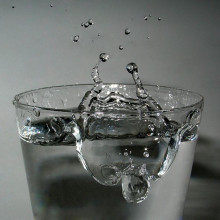
The Thirst for Knowledge
Imagine you've been told you've won a prize. But you don't know how much. It could be pennies or it could be millions. Most of us would be itching to find out about the size of the prize. Now researchers in the States have discovered that uncovering information about future rewards is actually rewarding in itself, and uses the same pathways in the brain as our response to very basic rewards such as food or drink.
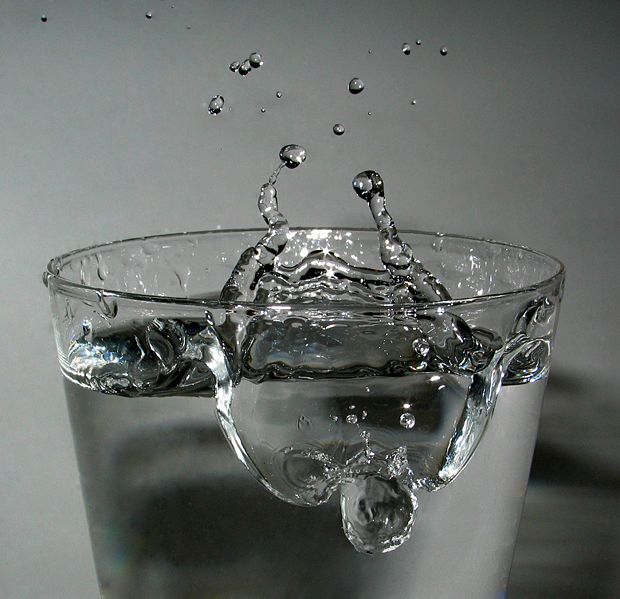 This is research by Ethan Bromberg-Martin and Okihide Hikosaka, who report their results in this week's edition of the journal Neuron. They were working with a pair of thirsty rhesus monkeys, who had been trained to choose between two different images on a computer screen using their eyes.
This is research by Ethan Bromberg-Martin and Okihide Hikosaka, who report their results in this week's edition of the journal Neuron. They were working with a pair of thirsty rhesus monkeys, who had been trained to choose between two different images on a computer screen using their eyes.
In return for picking a target, the monkey randomly got either a big drink or a small drink. The key point is that looking at one image brought up a symbol showing information about the size of their upcoming reward drink, while picking the other image only brought up a random, unrelated symbol.
The researchers found that after just a few days of training, the monkeys pretty much always picked the image that told them about the size of the reward, even though it didn't affect the size of the drink they got - they just wanted to know what was coming. The researchers also did a test where the monkeys could choose to look at a symbol telling them that information about their reward was coming up, or a random symbol, and again they showed a strong preference for the information.
The scientists then looked at what parts of the brain were responsible for this, and focused on dopamine-releasing neurons, which are known to be involved in reward pathways. They recorded the activity of 47 of these nerve cells in the monkeys' midbrains, and found that they became very active when the monkeys were shown the symbol for an upcoming big drink, but the symbol for a small upcoming drink switched them off.
Interestingly, the scientists found that the same group of neurons were also activated in the tests where the monkeys only saw a symbol telling them information was on the way, but switched off if they saw the random, non-informative symbol.
This tells us that the same nerve pathways in the brain are responsible for processing actual physical rewards, as information about upcoming rewards. Dopamine neurons are thought to work by adjusting the connections between other nerve cells, helping to teach the brain about basic rewards such as food or drink. But these new results suggest that dopamine neurons also teach the brain to seek out information, as well as just basic physical needs.
Of course, this is research done in non-human primates, but our brains are very similar to those of monkeys, and it's likely that the same pathways may be at work in our brains. Perhaps these dopamine neurons are very active in Naked Scientists listeners, as they thirst for knowledge.

04:47 - Jockeys Stance Shaves Seconds
Jockeys Stance Shaves Seconds
with Dr Andrew Spence, Royal Veterinary College
Chris - And also this week, there's a paper in the Journal Science that explains how jockeys have been able to shave up to 7% off their race times in the last 100 years and it turns out that it's all down to the way that jockeys sit in the saddle. They don't sit like that in that uncomfortable looking posture just for fun. There is some method to their madness and Dr. Andrew Spence form the Royal Veterinary College is here to tell us why. Hello, Andrew?
 Andrew - Hi, there.
Andrew - Hi, there.
Chris - Welcome to the Naked Scientists. So, what did you do?
Andrew - Well, so it started with the sort of a group discussion about this paper in humans where people had found that when you put a backpack on humans, it's allowed to slide up and down, they use less energy and...
Chris - So you mean bounce up and down? I think that was a Nature paper few years ago, wasn't it? When the rucksack, when a person's taking a step, the rucksack bounces up and down on an elastic band and they use less energy under those circumstances.
Andrew - You got it. Yes, it's a nice paper by Professor Larry Rome at UPenn. Basically, we thought, maybe the crouch posture allows the jockey to do the same thing and physically, what happens is that the jockey's legs act like shock absorbers and it turns out that if you're a horse, it's much easier to just keep the jockey off the ground, but not have to jiggle them up and down with each step that you take.
Chris - I get it. So, if the jockey is sat both upright in the saddle like a guardsman at Buckingham Palace, changing the guard then the horse with every step would have to lift the jockey up and down, whereas if the jockey stands up in that strange and bizarre posture, the "Martini Glass" posture...
Andrew - Yes.
Chris - Then the horse isn't physically lifting the jockey up because the jockey is basically countering the movement of the horse by bending his legs up and down?
Andrew - You got it. That's exactly right and it's hard for a human to imagine what that feels like, but I think, the closest we could get is probably to these Nepalese porters who carried big jugs of waters on these bamboo poles that can flex up and down, you know? It's easier to carry something if you don't have to accelerate it up and down each time.
Chris - How did you actually do the work?
Andrew - Well, so that was interesting. There's this whole new class of sensors coming out and basically, they're the kind of thing that's in your Nintendo Wii controller. So, it's the same chip that's in the little controller that it allows you to play Wii tennis. It's a little chip that can measure when it's being accelerated. And so, we put those in the saddle and on the jockey and we took measurements and we compared them and we saw that yup, presto! The horse moves up down a lot; and the jockey moves up and down a lot less.
Chris - Can you take that learning and make differences or changes to jockey's technique to train them so they'll make their horses to go even faster?
Andrew - Well absolutely, I mean that's, so - we don't even know. I mean, this is the tip of the iceberg really. So what would be really, really cool to do right is to get Frankie out there, get Frankie Dettori out there and then put some gadgets on him and then make some measurements on novices. You know, some of these are collaborators of the British Racing School take these. You know, they're really interested. They're young kids. They're 14, 15-year-old boys and girls who want to be jockeys and we, you know go out there and measure them, and you could compare and see how close Frankie is to perfect and who knows? You know, we could really use it as a training tool.
Chris - Sounds terrific. Thank you very much, Andrew. That was Andrew Spence who's from the Royal Veterinary College, explaining how jockeys actually move their bodies effectively, doing some of the work for the horse. That means the horse has got more energy to put in, to running fast and in fact, since 1900 when they started to adopt that posture. They're going about 7% faster.
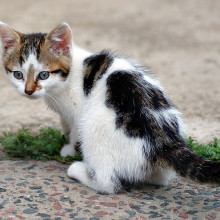
07:55 - A Message from our Cat Overlords
A Message from our Cat Overlords
It's a well-known fact that humans don't own their cats - rather the cats own us. This is why I, Dr Kat, am a dog person. And now a report in this week's Current Biology reveals how our feline overlords manage to persuade foolish humans to do their bidding...
This is research from Karen McComb at the University of Sussex, who got her inspiration from her own cat, who wakes her up in the mornings with an insistent purr for food that's impossible to resist. And as a scientist who studies vocal communication, she was intrigued.
By studying recordings of cat noises, McComb realised that cats were mixing together a purr with a more insistent cry for food. And when they played the recordings to people, these cries were judged to sound more insistent and needy that normal purring, even to people without a cat. When the team altered the recordings to remove the high-pitched crying element, people found the sounds less urgent.
Most animals, including humans, have an innate sensitivity to needy cries - which is why we respond to crying babies or mewling puppies or kittens. If an adult cat just meows, we tend to get annoyed, but by hiding a high-pitched cry inside a low-pitched purr, it helps to send the signal that they're hungry and need feeing, without the human owner realising they're being manipulated.
McComb thinks that although cats have a small amount of the high-pitched cry in their normal purr, they learn to dramatically exaggerate in order to get what they want. She also suggests that not all cats use this form of purring at all, and it might be used mainly by cats with a one-on-one relationship with their owner, rather than those in large households, where a loud meow might be more effective.

10:43 - The Future of Scientific Journals
The Future of Scientific Journals
with Emilie Marcus, Editor-in-Chief, Cell
Chris - The way that scientific discoveries get presented and published is about to undergo a big change: this week, in fact. For hundreds of years scientists have been writing up their findings and then publishing them in journals. These were effectively big science magazines and when the internet came along, many journals began to publish the material online that they were also putting into the printed edition. The problem is that the online environment isn't necessarily the same as the printed environment. So now Emilie Marcus, the Editor-in-Chief of Cell, one of the world's biggest science journals, is this week going to launch what they've dubbed 'the article of the future.' It's effectively a whole new way of presenting information and she's with us now. Hello, Emilie.
 Emilie - Hi, Chris.
Emilie - Hi, Chris.
Chris - Welcome to the Naked Scientists. Why do we need to change what we're doing at the moment? What's wrong with just putting up a facsimile edition of your printed papers on the web for scientists and doctors to download?
Emilie - Well, I guess, there's not necessarily something wrong with it. I think the current format, as you said, was developed for a print environment and is very effective for that at communicating information. But the bottom line is now we do have all the functionalities that an online environment can add to what one can do in print and really enhance the usability of the article. It's kind of like going to a movie these days and all the previews are in colour and with sound and full surround and then you get to the movie and it still a silent [black and white film]. I mean, there's nothing wrong with the silent black and white films but you can really use the new technologies that you have to improve the article, structure and form of online environments.
Chris - Indeed. I mean, when I'm trying to read papers that I'm going to talk about here on the Naked Scientists, the scroll wheel on my mouse does get a lot of use going up and down in the papers. What are you going to do to make your papers much more engaging and user-friendly on the internet then?
Emilie - Yes, so the two main points that we're trying to address with this first release of the article and feature prototypes are - one; helping users more quickly identify which papers they want to read. So, for that, we've added in the front more forms of summary of the papers. So, in addition to the traditional text abstract that's there, there is now also a graphical pictorial summary of what's in the paper and there are audio-visual interviews with the author that summarizes what's in the papers. So, depending on what you're preferred mechanism of figuring out which papers you want to read is you now have more options in going to the paper...
Chris - So the days of having to actually buy a second computer monitor, so you can display them more without going keep flicking backwards and forwards. You're saying those were over?
Emilie - Yes.
Chris - But talk us through the interface a little bit more because I know you started but- so, as I'm reading through the paper and I see, say, a little bit of information that I think very interesting. I'd like to drill down a little bit more about say, a particular reference. Can you do that?
Emilie - Yes, so all of the information now hyperlinks to the references and likewise, you can start from a the reference then go back to figure out where in the paper that reference is discussed. So the entire text is much more interconnected in the entire layouts is more interconnected and there is also a way to navigate through it based on, basically, a picture. So, you can look at a picture, an illustration and say, "Okay, this is a part of the paper I'm interested in," and click on it and it will take you directly to that part of the paper. So you no longer have to sort of start at the beginning as you did in the print environment and read from the beginning through, to find what you want.
Chris - Now presumably, you've tested this out on volunteer guinea pig scientists and another potential users. What do they say about it?
Emilie - Yes, we have had our team of guinea pigs. So far we've done user-testing and all of the responses have been incredibly enthusiastic. They liked the idea of trying to rethink from scratch how to present the information and the scientific article online. We really took a sort of bottom-up approach, let's figure out this is the information you want to get across, you have all this ability online, what's the best way to structure it and not just take what work can print and transfer it? They really liked that approach, they liked what we've come up with. They had some very good suggestions for additional features we could add. So it will be an ongoing evolving project to continue to develop an article for an online environment that has more functionality than in print.
Chris - Now obviously, this must involve additional investment on the part of your journal, in order to make this much richer online experience. So, how are you going to make it pay?
Emilie - Well, actually the investment comes up, I think, in designing the prototypes. Today, scientists put a huge amount of effort into preparing articles for publication in a print format, both in terms of the text itself and the creation of all the figures. So there already is a lot of effort that goes in to producing a paper. I think with this new type of presentation, what types of information the authors have to provide to us will change but the total amount and workload involved won't. So I think now that we set up the expectations and guidelines for what we need as publishers to be able to present the articles this way, the authors will supply us with some different types of figures etcetera, but once the transition is through the actual workload won't change. There should not be any net increase in cost to produce it in this way.
Chris - So we can all look forward to a much better online environment and we understand Emilie, it's your birthday as well today. So, thank you very much for joining us on your birthday. You can go and have that glass of champagne now. Thank you very much. That was Emilie Marcus who's the Editor-in-Chief of Cell, where they're rolling out a whole brand new way of putting information onto the internet in a much more engaging fashion, so that it should be much easier to get access to that information and then learn from it.
I have a suggestion for the noise that electric cars should be forced to make?
I have a suggestion for the noise that electric cars should be forced to make:A hissing sound like that of a snake, for three simple reasons:(1) It is not a sound that you would hear in an urban environment so it will be unmistakable.(2) Many animals are genetically predispositioned to avoid snakes as predators so they will avoid cars which may in turn reduce the amount of animal MVAs(3) The noise is easily replicated with a broken whistle (a standard one with a metal barring inside of it)Thanks for the good question, it got me thinking...

Thank you so much for answering my question?
Thank you so much for including and answering my question about colour this week.I was thrilled, and so interested to hear what Professor Ron Douglas had to say.I shall continue to listen enthusiastically to your great podcast, all good luck with it.
Regarding the maximum size of aircraft?
Chris - We said there shouldn't really be a theoretical maximum for an airplane. It will be down to the materials that are used to design it and whether you can make a frame that's big enough and cost-effective enough to put in the air, and he says, "Yes, planes could be made bigger but there is a worldwide gate size limit, in other words the air terminal, of 80 meters wing span. The A380, that's the new massive airplane, it's got something like four or five hundred people on it - a 79.8-meter wing span for that one and this restriction is to stop collisions apparently. But he says, "To make a larger plane would require a longer wing span which should be greater than the legal limits." Apparently, Howard Hughes did build the largest plane ever. It was in 1947, it was called the H4 and it was nicknamed the 'Spruce Goose' and had a 97-meter wing span.Kat - I wouldn't like to try and park that one!
Great cocktail party fodder!?
I just wanted to write to congratulate you on a fantastic show. I listen every week. You are carrying on the tradition of people like Carl Sagan who bring science to laypeople like myself. The show is fascinating, entertaining, and makes for great cocktail party fodder. Keep up the good work!Kat - I wish I could come to some of your cocktail parties where they talk about science!
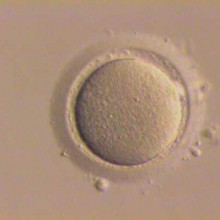
26:46 - Improving IVF
Improving IVF
with Dr Dagan Wells, Oxford University
Kat - This is the Naked Scientists with Dr. Chris and Dr. Kat and we're talking all about the science of pregnancy and conception. Now, many people manage to get pregnant doing it nature's way, when mummy and daddy love each other very much. But some people need a little bit of medical help and that's when they turn to in vitro fertilization. For some people, this is the only they're able to have their own children but at the moment, it is far from perfect and there's quite a high failure rate. This can leave people obviously very distraught and out of pocket and sometimes, because often multiple embryos are put into women, people who just want one baby can end up to slightly more than that. Now, in a few minutes, we'll be hearing how blood test could tell whether or not you're suitable for IVF. But first, we're joined Dr. Dagan Wells from Oxford University. Hello.
 Dagan - Hello there, Kat.
Dagan - Hello there, Kat.
Kat - Hello. Just for a start, talk us through the IVF process. What's it basically all about and what's going on there?
Dagan - Sure. Well, it's been an enormously successful technique since it was developed in a little over 30 years ago now. It's essentially a way that you can get around problems where maybe the egg is having difficulty making it through to the womb or sperm having difficulty making it to the egg or fertilizing the egg, and what happens is the woman actually undergoes a course of a hormonal treatment which allows her to generate multiple eggs in a single cycle, rather than the usual one that you would get in a typical monthly cycle. Those eggs are then taken out and outside the body their fertilized with her partner's sperm and so that's get around any possible difficulty that the sperm would have, reaching the egg and after that, several embryos are usually produced from these eggs and then the real challenge, and what we've really been working on, is trying to work out which of those embryos should actually be then transferred back to the mother. The idea is, ideally, that you transfer one back and then get one pregnancy and hopefully, one healthy baby out at the end. But the problem of is that actually multiple embryos are generated but they're not all equal. They don't all have an equal chance of making a baby and so, what we're trying to do now is to find out which we should transfer. At the moment it's bit of a luxury and just to increase the odds of success, it's not unusual for an IVF centre to transfer several embryos and certainly, in other countries, in the U.K. it's rarely more than two.
Kat - So, tell us a bit about some of tests that you've been developing because I've actually, in my previous life as a scientist, worked on human embryos and I am sometimes amazed that any humans get pregnant at all. How can you tell what are good embryos and what are bad ones?
 Dagan - You are absolutely right. It's amazing really, when you actually see what's going on in the human embryos, that we get pregnant as easily as some people seemed to manage. The primary way that's been used for many years is to just look at the embryo down the microscope. There were certain appearances of the embryo which may give you a clue that made the embryo isn't developing as well as it should. However, it's wide knowledge that really, that's only a very rough guide to embryo quality, the chance of them, making a baby. And so, what we've been looking at is in more detail on the genetic level. Specifically, we've been looking at the chromosomes. Now, as you probably know, every cell in the body ought to have 46 chromosomes with just a couple of exceptions and so, that's what you would expect to find. However, it turns out that in human embryos, this is incredible level of chromosome abnormality, having the wrong number of chromosomes, and the effect of that usually is that those embryos affect through these chromosome abnormalities, cannot actually produce a child. Either they just never initiated pregnancy at all or they miscarry early in pregnancy.
Dagan - You are absolutely right. It's amazing really, when you actually see what's going on in the human embryos, that we get pregnant as easily as some people seemed to manage. The primary way that's been used for many years is to just look at the embryo down the microscope. There were certain appearances of the embryo which may give you a clue that made the embryo isn't developing as well as it should. However, it's wide knowledge that really, that's only a very rough guide to embryo quality, the chance of them, making a baby. And so, what we've been looking at is in more detail on the genetic level. Specifically, we've been looking at the chromosomes. Now, as you probably know, every cell in the body ought to have 46 chromosomes with just a couple of exceptions and so, that's what you would expect to find. However, it turns out that in human embryos, this is incredible level of chromosome abnormality, having the wrong number of chromosomes, and the effect of that usually is that those embryos affect through these chromosome abnormalities, cannot actually produce a child. Either they just never initiated pregnancy at all or they miscarry early in pregnancy.
Kat - So, tell us a little bit about the way you've been testing because at the moment, they do a pre-implantation, genetic diagnosis on embryos when they're just, you know, a few cells. Tell us about the technique that you've been developing.
Dagan - Yes, that's exactly right. There is an existing technique where a single cell is removed from the embryo, three days after fertilization. At which point, it usually is only consisting of about six to eight cells. So, at that point, you can take one cell and you can test it and you can look at about half of the chromosomes that are in there. And people have used that for a number of years. Some people have said that it's helped considerably with pregnancies, but other people have said it doesn't work at all and may actually would reduce the chance of the embryo making a baby. Now, the difference of what we're doing now is we're waiting an extra two days. Might not seem like much, but in those two days the embryo goes from just a handful of cells up to over a hundred cells. And that means that at that point, we can actually take several cells. Now, the effect of that is that we get a much more reliable test.
Kat - And that doesn't presumably do too much damage to the embryos. So if you've got a woman that the test says it's all right, you are not going to be hideously harming it?
 Dagan - Exactly. Again, if you do the traditional test, looking on day three after fertilization, there is accumulating evidence that, that may have some impact on the embryos ability to form a pregnancy. It's not that it's going to give rise to a child with, you know, a body part missing or something like that. It's a more all or nothing thing. It may just simply not make a pregnancy. Now, if you look at the stage that we look at, known as the blastocyst stage, two days later, that's a very robust stage and the embryo tolerates the biopsy beautifully, almost as though nothing had happened to it. The other thing we're doing is rather than just looking at half the chromosomes, we're looking at the full set. So, we're really getting a very comprehensive idea of what's going on.
Dagan - Exactly. Again, if you do the traditional test, looking on day three after fertilization, there is accumulating evidence that, that may have some impact on the embryos ability to form a pregnancy. It's not that it's going to give rise to a child with, you know, a body part missing or something like that. It's a more all or nothing thing. It may just simply not make a pregnancy. Now, if you look at the stage that we look at, known as the blastocyst stage, two days later, that's a very robust stage and the embryo tolerates the biopsy beautifully, almost as though nothing had happened to it. The other thing we're doing is rather than just looking at half the chromosomes, we're looking at the full set. So, we're really getting a very comprehensive idea of what's going on.
Kat - And how are you actually looking on the chromosomes? What's the technique that you're using?
Dagan - Well, we're using a method that was originally developed for looking at chromosome abnormalities in tumors which are of course, very common. They have a similar problem to what we have and that is very hard to actually get a cell, to show you its chromosomes from some cancers and certainly, from the cells of the embryos. So what we do is we actually take the DNA that makes up the chromosomes out of the cells and we actually colour it in, we label it with a fluorescent colour, and usually, we label the embryo cell DNA green. We then take some DNA from someone who we know has a normal set of chromosomes, they're exactly the right number and label their DNA with a red colour. We'll mix those green and red DNAs together and we apply them to some chromosomes that are stuck on a microscope slide. Now what happens is the red and green DNAs kind of fight it out to stick down to these chromosomes. If they fight it out equally, all of the chromosomes get equally covered with red and green DNA, and you get kind of yellow colour from the mixing of those two colours. But if our embryo for example had one chromosomes too many, it's going to have relatively more green DNA than it should, just because it's got one chromosome more than it should. And so, one of chromosomes on the microscope, down on the microscopic slide, will end up looking more green than they ought to and that's what gives away that there's been an abnormality.
Kat - Fantastic and so, just very briefly, are you actually using this to get successful pregnancies? What's the success rate like when you do this test?
Dagan - Yes, it's a great question. That's the real acid test at the end of the day. Well so far, we've done a prospective trial of this and this is in association with a centre in America called the Colourado Center for Reproductive Medicine. Now this isn't a randomized trial, so it's not really the gold standard study, but what it is, is a prospective trial which I think, is indicative. We've done about - well, over a hundred cycles now and the pregnancy rate is actually about 90% which is way higher than you would ever normally expect in IVF. Now, that has to now go ahead and be verified in a well controlled study which is what we're going to be initiating actually in London in September of this year.
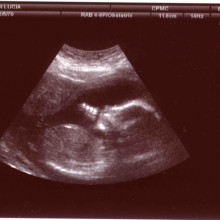
35:11 - Blood Tests for IVF Success
Blood Tests for IVF Success
with Dr Cathy Allen, Rotunda Hospital, Dublin
Chris - We've now heard how you can test embryos for vital clues as to which ones are probably the healthiest and therefore likely to result in a successful pregnancy, but what about testing mothers directly so that you can predict who's got the best IVF prospects? Well Dr Cathy Allen is at the Rotunda Hospital in Dublin where she's been working on just that sort of idea. Hello Cathy, welcome to the Naked Scientists, can you first of all tell us, what are you doing about this test, what have you actually discovered?
 Cathy - Well first and foremost, I just have to clarify we're far away from having a blood test that is readily available, but as far as we have been doing is looking at possible markers in the blood, in the circulation of our personal blood that might give us some insight into what is happening and during the early conceptual time and early pregnancy. And so basically, what I was doing was looking at the messengers, the genes send out when they are undergoing a particular function or messenger RNA (mRNA), and we looked at this and again, as the same preferred blood but we looked particularly for and I think you know that would be coming not only from the mum, the maternal genome but also from developing embryo and early trophoblast or placental tissue. And we basically took a blood tests from women who were undergoing an IVF. I asked their several times points before during and after their treatment and we compared the gene expression profiles that were seen with these people.
Cathy - Well first and foremost, I just have to clarify we're far away from having a blood test that is readily available, but as far as we have been doing is looking at possible markers in the blood, in the circulation of our personal blood that might give us some insight into what is happening and during the early conceptual time and early pregnancy. And so basically, what I was doing was looking at the messengers, the genes send out when they are undergoing a particular function or messenger RNA (mRNA), and we looked at this and again, as the same preferred blood but we looked particularly for and I think you know that would be coming not only from the mum, the maternal genome but also from developing embryo and early trophoblast or placental tissue. And we basically took a blood tests from women who were undergoing an IVF. I asked their several times points before during and after their treatment and we compared the gene expression profiles that were seen with these people.
Chris - So Cathy, you're basically comparing healthy outcomes; In other words, IVF that's successful and looking at whatever spectrum of markers get turned on with less good outcomes, in order to work whether there is a combination of markers that predict a good outcome?
Cathy - Yes. Well one of the areas that we learn or one of the time points that we took was just before the potent drugs of IVF were given. So usually, in an IVF cycle, the first thing to do is to control the innate or natural hormonal cycle of the woman undergoing the treatment because you don't want her own hormonal cycle to ovulate all of the stimulated eggs that are still in the ovary at the time point when you are not ready. Everything has to be very, very controlled. So basically, the pituitary gland in the brain is suppressed and this is usually as in a lot of centres, it's about two weeks of the nasal spray before that the IVF proper begins. And at that time point, we were able to see in the bloods, in the characteristic gene profiles of the women who went on to become pregnant and those who were unsuccessful, we were able to see a very characteristic difference at that point. So, this is then something that we find very interesting and very exciting.
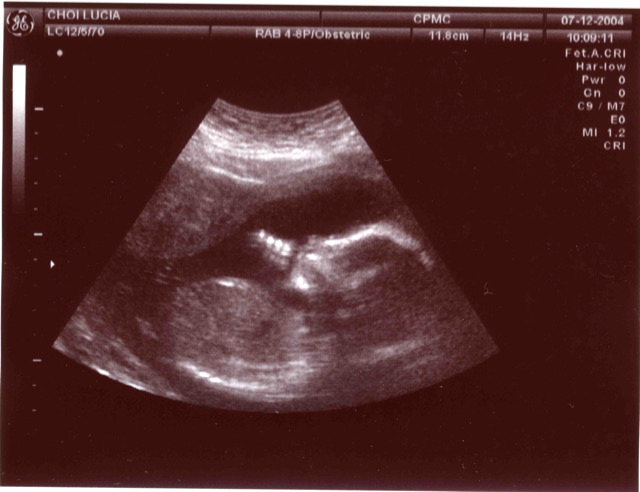 Chris - Of course, but if you can see differences, then that gives you immediately something to study because you can ask, "well what is that difference and can we rectify that difference to give those people who were having a bad outcome better prospects of a successful IVF treatment in future?"
Chris - Of course, but if you can see differences, then that gives you immediately something to study because you can ask, "well what is that difference and can we rectify that difference to give those people who were having a bad outcome better prospects of a successful IVF treatment in future?"
Cathy - Well, you know the, trying to manipulate genes and gene pathways is further down the line but first is to understand, this is all very new. So, we were able to kind of look as well what are the genes and what processes in the body are being involved in and the key areas that we found at the most prominent genes that were acting differently, that they were making, you know, biologically plausible sense. So, there were key areas like new blood vessels formation and inflammation, and oxidative stress and interestingly, our group has a lot of work on cancer and stem cells, and then it was the same source of profiles that you got from the early stem cells. So obviously, there's a lot and more work to be done on this, but certainly, the two patient populations, those who went on to become pregnant, and those who didn't, were very, very different indeed. So, it will be interesting to see if this could be developed into a sort of a profile or a signature of success or failure that could help people when they are on the IVF trail and then trying to see if they're chances are good. Because at the moment, the prognostic tools that we have to guide patients, making these difficult decisions are really blunt basically. Female age and the past reproductive history and anything else and obviously, Dagan's work is very exciting. But at the moment, we still use very broad statistics to guide our patients.
 Chris - What about upstream of IVF though because obviously people have to try for a while to find out that there is a problem before they then go down that route? Some people could be spared a lot of time because obviously, people have to try for a while to prove that they're not going to get pregnant the normal way before they go and have IVF. We could spare them that time before we could pre-empt who is going to fall into that "I need IVF" category could something like the system that you're using be used to predict who those people are?
Chris - What about upstream of IVF though because obviously people have to try for a while to find out that there is a problem before they then go down that route? Some people could be spared a lot of time because obviously, people have to try for a while to prove that they're not going to get pregnant the normal way before they go and have IVF. We could spare them that time before we could pre-empt who is going to fall into that "I need IVF" category could something like the system that you're using be used to predict who those people are?
Cathy - Well, I don't see that in the earlier or in the near future. I would hope that and this information may be useful really for people who have done IVF maybe once or twice and have, you know, for no good reason or knowing explicable reason and had to have no success, and I think these are the people that I would see where it's extremely difficult for them to decide whether to, you know, throw the dice again, have another go of IVF or to call it a day. So, I think really, I think clinically, this sort of test would be probably useful for those individuals who have, you know, disappointment after disappointment.
Chris - I've got an email here from Matthew who says, "I have a question that is related to this. Is it true that a woman's degree of fertility or the amount of oestrogen that she produces depends on her genes? I'd be grateful if you could consider this."
 Cathy - Well, sort of indirectly, yes and you do need to have the proper genes, acting in a synchronized fashion for the proper hormonal and cycle to occur, but there's a lot more to it for example there are women who had have very high oestrogen levels but still reduced fertility because of the patterns of the hormones and peaking and troughing during the month would be incorrect. So yes, if you've got a very, very low oestrogen levels, it's a reflection really of what's going on with the ovaries and how they're functioning.
Cathy - Well, sort of indirectly, yes and you do need to have the proper genes, acting in a synchronized fashion for the proper hormonal and cycle to occur, but there's a lot more to it for example there are women who had have very high oestrogen levels but still reduced fertility because of the patterns of the hormones and peaking and troughing during the month would be incorrect. So yes, if you've got a very, very low oestrogen levels, it's a reflection really of what's going on with the ovaries and how they're functioning.
Chris - So, is your work suggesting then that some people are effectively genetically predestined not to get pregnant?
Cathy - Well, I don't think it's in the genome that we inherit. I think it's in the way that the genes themselves activate or are expressed. I mean basically, we all inherit our genes. We're stuck with them whatever they are, but they don't just stay static, you know during our lives. Genes are and are activated, upregulated and downregulated according to the different physiological process they're undergoing. For example, if you're recovering from an illness, certain genes will be turned on, certain genes will be turned off and really, you know, it's the expression is differently controlled in the appropriate way and who knows what affects that. May be it's our lifestyle, maybe it's in the environment, maybe it's just our physiology. But I think it's not just predestined forever, you know, from the time you we're born, no.
Chris - Which is encouraging news. Thank you, Cathy. We have to leave it though. That was Dr. Cathy Allen. She's based at the Rotunda Hospital in Dublin, where she's been working on what blood tests can tell us about the possible prospects of a course of IVF.
Is fertility affected by genetics?
We put this question to Dr Cathy Allen:Cathy - Well, sort of indirectly, yes and you do need to have the proper genes, acting in a synchronized fashion for the proper hormonal and cycle to occur, but there's a lot more to it. For example, there are women who had have very high oestrogen levels but still reduced fertility because of the patterns of the hormones, and peaking and troughing during the month would be incorrect. So yes, if you've got very, very low oestrogen levels, it's a reflection really of what's going on with the ovaries and how they're functioning.

42:54 - Stress During Pregnancy
Stress During Pregnancy
with Professor Vivette Glover, Imperial College London
Vivette - Well, we're interested in how the emotional state of the mother during pregnancy affects the development of the foetus or the future child and what we're finding is that quite a wide range or different sources of stressors; the mother's more anxious, she has quarrels with her partner, can affect fetal development.
 Meera - So, how have you gone about looking in to this?
Meera - So, how have you gone about looking in to this?
Vivette - Well, we recruit pregnant women and we ask them all sorts of questions about themselves, quite often we ask them to fill in questionnaires or we interview them. So, we find out different aspects of their emotional state.
Meera - So what effect does their emotional state have on their foetus?
Vivette - Well, we then follow up the child and what we find is that there's quite a wide range of different effects it can have on the child. It could increase the risk of symptoms of Attention Deficit Hyperactivity Disorder, ADHD, can increase the child's level of anxiety, it can have an effect on their learning abilities, so they have a lower IQ and it can make them have a high level of conduct disorder of generally being hard to control. Different children are affected in different ways. So, we think this is probably an interaction with their genetic vulnerability. So, say if they are genetically vulnerable to anxiety that increases the risk of them becoming anxious children.
Meera - And so, what is the actual connection between this so what happens as a result of the mother of being stressed to then have this effect on the baby?
 Vivette - Were looking into that at the moment, the evidence that there are certain effects is very good. The evidence about the mechanisms is only just starting. But one of the things we think is probably involved is the stress hormone cortisol and we have some evidence that if the mother is stressed, this affects the function of her placenta which usually filters what passes from the mother to child, it is usually a very effective barrier to cortisol, but if she's anxious more cortisol passes to the child. So, we think that's part of the mechanism. The placenta's function is affected and the foetus is exposed to more cortisol and that changes the development of the foetal brain.
Vivette - Were looking into that at the moment, the evidence that there are certain effects is very good. The evidence about the mechanisms is only just starting. But one of the things we think is probably involved is the stress hormone cortisol and we have some evidence that if the mother is stressed, this affects the function of her placenta which usually filters what passes from the mother to child, it is usually a very effective barrier to cortisol, but if she's anxious more cortisol passes to the child. So, we think that's part of the mechanism. The placenta's function is affected and the foetus is exposed to more cortisol and that changes the development of the foetal brain.
Meera - It's thought that the increase in the amount of cortisol reaching the baby could be perhaps be to do with an enzyme that isn't functioning quite correctly, is that right?
Vivette - That's right what we think is happening is that the placenta usually has a very high level of the enzyme that breaks down cortisol and it has been shown in animals, and we are just studying now because we think it's probably happening in humans, that the enzyme gets what's called down regulated, it becomes less effective, so the barrier to cortisol becomes weaker, more cortisol goes through the placenta, but we're studying on that right now.
Meera - Well now, as part of your stand here at the Royal Society, you've actually got some human placentas on show. So I must admit it's very intriguing to look at. So, could you take me through this placenta?
Vivette - Well, this was delivered about a week ago. We've got it encased safely in a vacuum-packed bag bit like you might get meat in the supermarket so you can see the actual structure of the placenta, you can see the cord, you can see the foetal side and the maternal side.
Meera - That's quite a difference in colour between the foetal and the maternal side.
Vivette - Yes, the placenta is actually made from the foetus and you might not know that the placenta has a sex. So, if the foetus is male the placenta is male and actually, male and female placentas behave in different ways.
Meera - How do they behave differently? What do they do?
Vivette - We'll, we're just starting to look at that, but for example, if the mother has asthma, the response of the placenta is quite different whether it's a male or female placenta.
Meera - And so, this difference in the male and female placenta, could that change if the mother is then stressed, so could that then have a different effect on the child?
 Vivette - That's one of the things we're looking into right now, which has been shown in the animals, so there are quite big differences in how baby girls and baby boys are affected by prenatal stress and so, we're looking to see if that's happening in humans as well.
Vivette - That's one of the things we're looking into right now, which has been shown in the animals, so there are quite big differences in how baby girls and baby boys are affected by prenatal stress and so, we're looking to see if that's happening in humans as well.
Meera - And just lastly I guess, what is it about this increase in cortisol entering the child that has an affect on the child? What does it do to a baby?
Vivette - Well it does a lot of things. It causes it to grow more slowly, so it can help to contribute to the baby, being born small for its gestational age, but it also affects how the brain develops. It depends on the time of exposure but different bits of the brain, the part of the brain that controls fear or controls memory come to be developed in different ways because it's exposed to high levels of cortisol.
Meera - And so once this is fully understood, is this just going to increase advice for mothers to basically trying to stay stress free?
Vivette - Well I think that should be part of what's more generally known in society. Mothers there's a limit to how much they can do for themselves and I think, they should be advised to try and look after themselves and take time off and relax. But I think it's also very important there should be more help given to pregnant mothers. I think the physical care in our country of pregnant women is very good. The emotional care of pregnant women has hardly started and I think if we could provide more emotional support, the appropriate kind, depending what the problem is, we could help the outcome and health, not just of the mother but of her child as well.

Do animals suffer from post natal depression?
Kat - Well this is an interesting one. I've been doing a bit digging around and actually, there is some evidence that some animals can have post-natal depression.
The main animals that have been looked at are rats and mice, because they've mainly been used as laboratory models for humans and they do find that rats can show depressive symptoms, things like poor nursing, signs of stress and anxiety after birth and they were also quite useful.
You can also manipulate the hormone levels in rats to bring on post-natal depression-type symptoms, and there's some labs that are doing this and are trying to test interventions and ways to help reduce this, because it's definitely thought that changing hormone levels - increases in cortisol, drops in females sex hormones - help to bring on this kind of problem.
There are some interesting mouse models as well, particularly mice who have faults in their GABA receptors in their brains on their brain cells; their nerve cells are much more likely to show these kinds of depressive symptoms after birth.
A terrible experiment has been in done rats: they find that, if they take their puppies away for short lengths of time - well not like days - if they take their pups away, it does induce depression-like symptoms.
I can't find any evidence about larger animals but there are certainly some anecdotes out there about dogs and cats. Some of them showing post-natal depression types symptoms like not nursing properly and not really being themselves.
Chris - It's interesting because the same mechanisms that lead to another mother baby bonding in humans also work in animals don't they?
Kat - Absolutely.
Chris - There are big changes in hormones, which we know affect the moods of animals and in the way in which they engage or link or associate / bond with their offspring. So it's not so unlikely that the same hormones that trigger the mood changes in us to cause post-natal depression could also occur in another mammalian species.
Kat - Yes I would certainly expect it to be the case and certainly definitely in the lab rats and mice can show post-natal depression.
When do cats sound adult?
Chris - I'm not sure I know the answer to that.Kat - No, I do think so. I don't know when the cats go through puberty - is there cat puberty? If any listeners have any cats and would like to tell us when their cats started sounding like a grown-up cat.Chris - Is it puberty?Kat - Oh I don't know, maybe! When does a cat become mature enough to make an adult sound? Maybe when it's fully grown, I don't know, interesting one.Do let us know if you have any ideas!
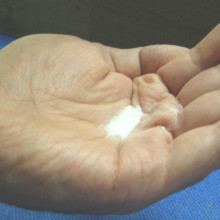
Why do we need salt?
Chris Smith answered this question...
Chris - Well, the reason the body needs salt is because every single one of our cells contains large amounts of salt; salt is the generic term for "ions" - charged particles - and most of the cells in our body, in fact all of the cells in our body, are electrical. In other words they pump these ions from one side of their cell membrane, which is a lipid or oily substance and therefore an insulator, so they pump ions from one side of that membrane to the other and this means there is an electrical potential difference across the membrane of a cell and this means that this gradient - this electrical difference - can be used by the cell to do other sorts of work. So cells, for instance, do have channels through which sodium can flow into the cell and it comes down its potential difference in concentration gradient and the result is that it can be used to pull in glucose at the same time. So sugars can get into cells.
So we need salts in our cells - that's how they regulate their size by bringing water in by osmosis; that's also how they regulate electrical activity. Nerve cells, for instance, couldn't carry information without actually having this electrical gradient across the membrane because all that's happening when a nerve cells fires off an impulse is that you get a sudden flood of sodium in to one patch of a nerve cell. This brings in lots of "plus" to that part of the cell and therefore an electrical signal goes whizzing down the nerve and gets built up and regenerated as it goes down the nerve and it travels at about 50 to a 100 metres a second; so very rapid transmission of information.
So we need salts in our body, we take in salt in our diet, we absorb salts and those salts are also include important things like calcium to make your bone strong but you're also losing salts all the time when you go to the toilet for example you lose calcium, you lose phosphates. This is both in urine and faeces so you have to continuously top up the number of salts that you have in your body because you have obligate or insensible losses.
Kat Arney - But we hear so much about salt being really bad for you in your diet giving you high blood pressure. So if you have a diet that's too low in salt is that also pretty bad for you?
Chris - Well the body is very good at scavenging salt from what you eat and what you drink, so it's very rare for people to get too low a level of salt in the body based on diet alone. Usually there's something pathological going on. Sometimes what happens is that people have a problem called syndrome of inappropriate ADH (SIADH). This is anti-diuretic hormone and the body saves too much water so it scavenges back water and as a result your blood can become too dilute and you have very low sodium levels and this can cause problems with your brain swelling. It can also cause the accumulation of water elsewhere around the body and it can cause heart failure so a bad thing to have. But that can cause low salt levels that can make people feel dizzy...

Why is black skin good in hot climates?
Kat - Well, basically, this all boils down to a pigment called melanin...
This is the dark pigment - if you're fair skinned, you can see it in your moles; if you're dark skinned, you have a lot of melanin all over your skin. And melanin is almost like the body's natural sunscreen, it helps to protect you against the damage that ultra-violet light can do.
This means that people from countries that have dark skin, they're actually much less likely to get skin cancer. Us people with very fair, pale skin, when we're exposed to a lot of sun, a lot of ultra-violet radiation, our chances of getting skin cancer are actually much higher because the UV light from the sun can really penetrate into the skin. Whereas if you have dark skin, the melanin helps to protect you.
There's also an interesting argument, some recent evidence, from Nina Jablonski; we heard her talking on the show recently about this, that very deep ultra-violet radiation can actually break down folic acid, folate, in your body. Obviously, you need to protect yourself against this happening, because folate is really important for healthy metabolism and also for making healthy babies.
So it's probably a natural defence mechanism that's evolved in people from countries where it's very hot to tend to have dark skin and lots of melanin to protect you.
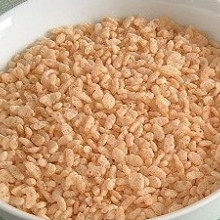
55:07 - Why does cereal go Snap, Crackle and Pop!?
Why does cereal go Snap, Crackle and Pop!?
We put this to Paul Wheeler:Hi my name is Paul Wheeler and I work for Kelloggs.It's actually a really simple processes it's got a lot to do with compression. What we do is we take little grains of rice. We soak them in water, add our secret ingredient to it and then we cook the rice at a really high temperature. What happens then is the rice puffs up and little air pockets form inside the grains of rice. Now also when you cook this kind of thing, rice, at such high temperature the starch molecules kind of begin to bond together and what that does is if you were to take a rice crispie out of the packet and look at it under a microscope. You would see the actual surface of the rice becomes more brittle and actually more transparent. So what happens is when you pour the cold liquid onto the rice crispie the small bubbles of air that we've got, they collapse in on themselves and the rice that's crisped up through the cooking process collapses as well and that's where you get the sound-effect from, your listeners will hear when they pour their milk on their cereal. Its a really, really a simple process and actually people looked at the surface of the milk when that's happening they can actually see the air bubbles rise up and appear.
Do jockeys make horses faster?
Chris - Just looking at Andrew Spence's paper in Science. He was the guy talking to us earlier and actually pointed out the jockey contributes about 13% of the weight of horse and rider and when you load a horse up it does run slower. They've got evidence to show that, so the jockey does slow the horse down but a good jockey by adopting this posture and also pumping the knees up and down, they're saying could effectively contribute energetically to the running horse. So, yes they could potentially make a contribution and that's why a good rider has this skill.
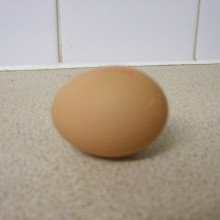










Comments
Add a comment